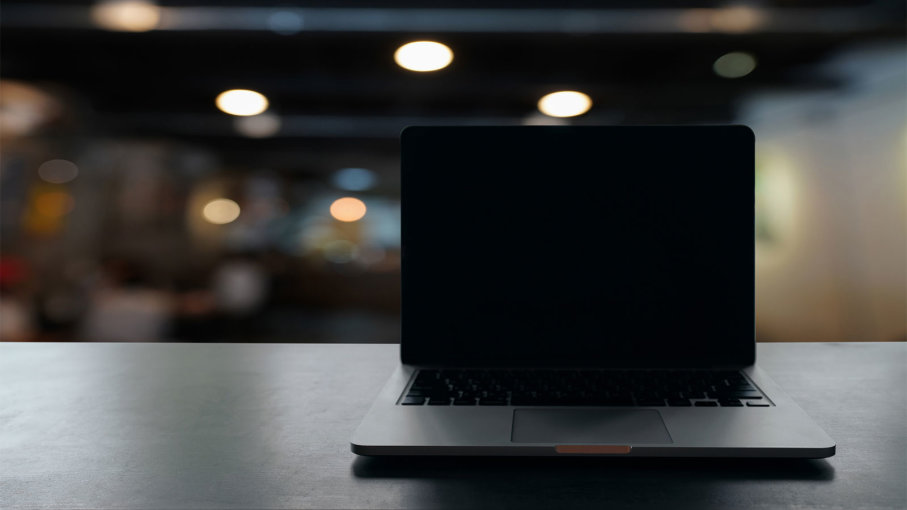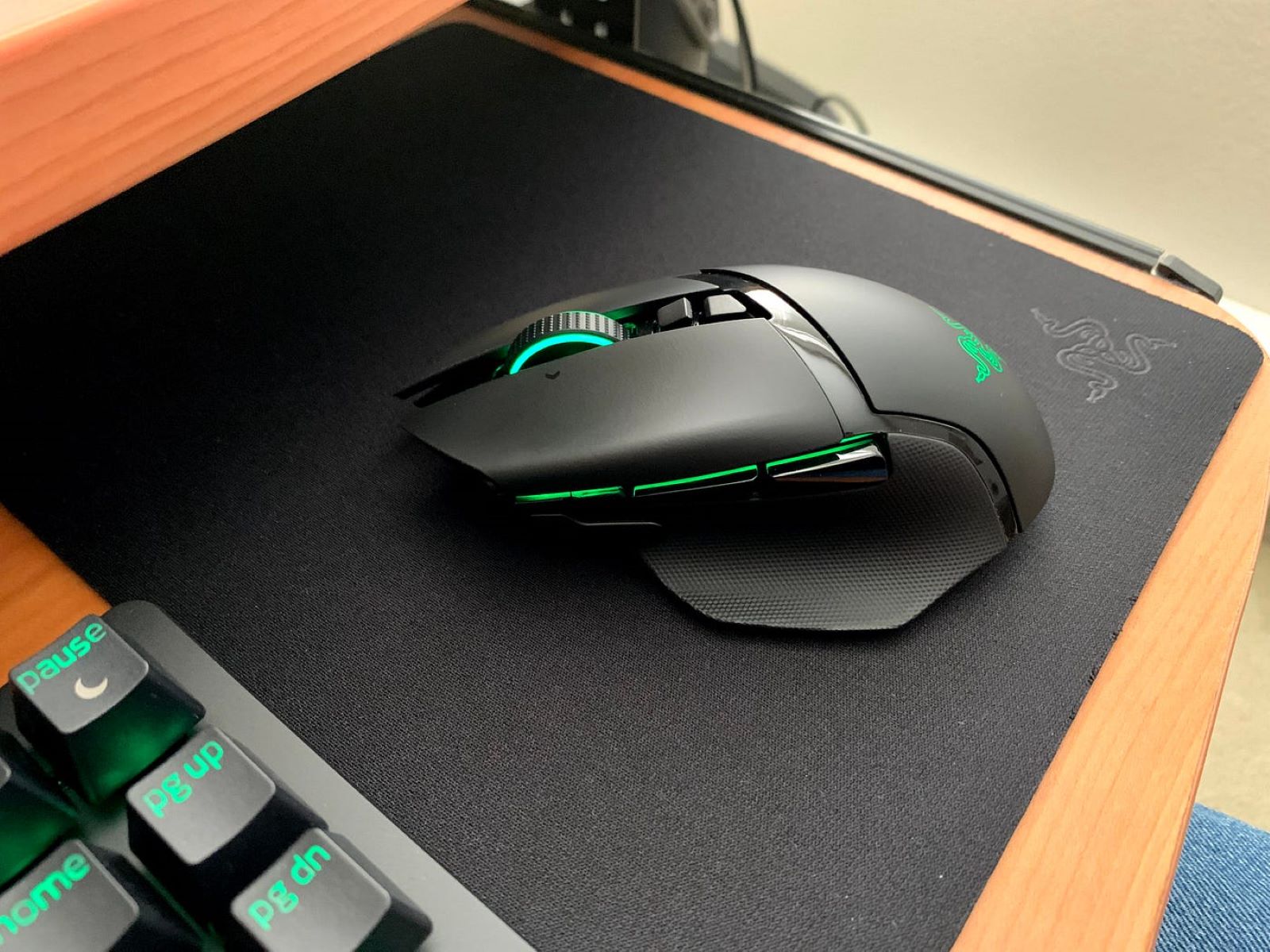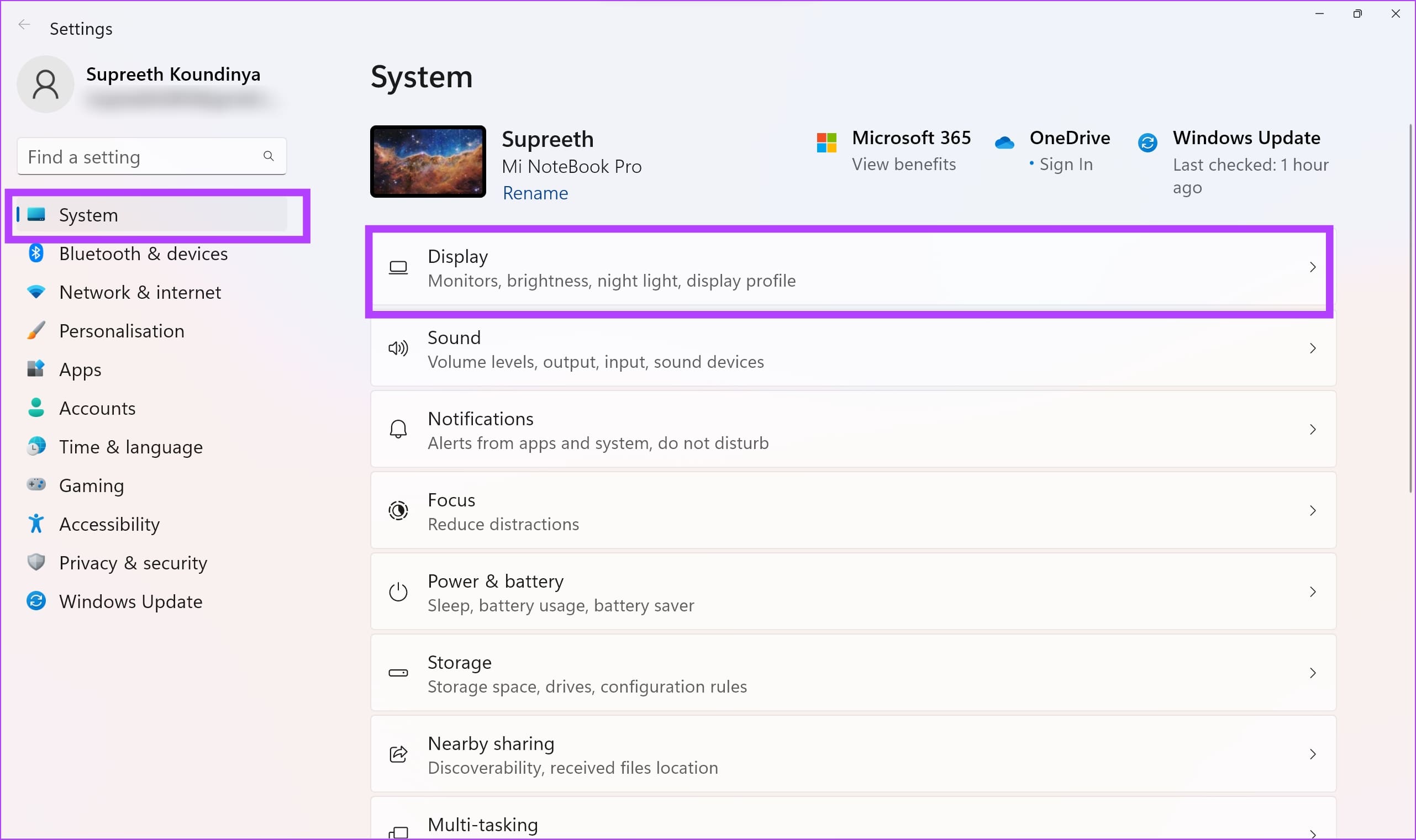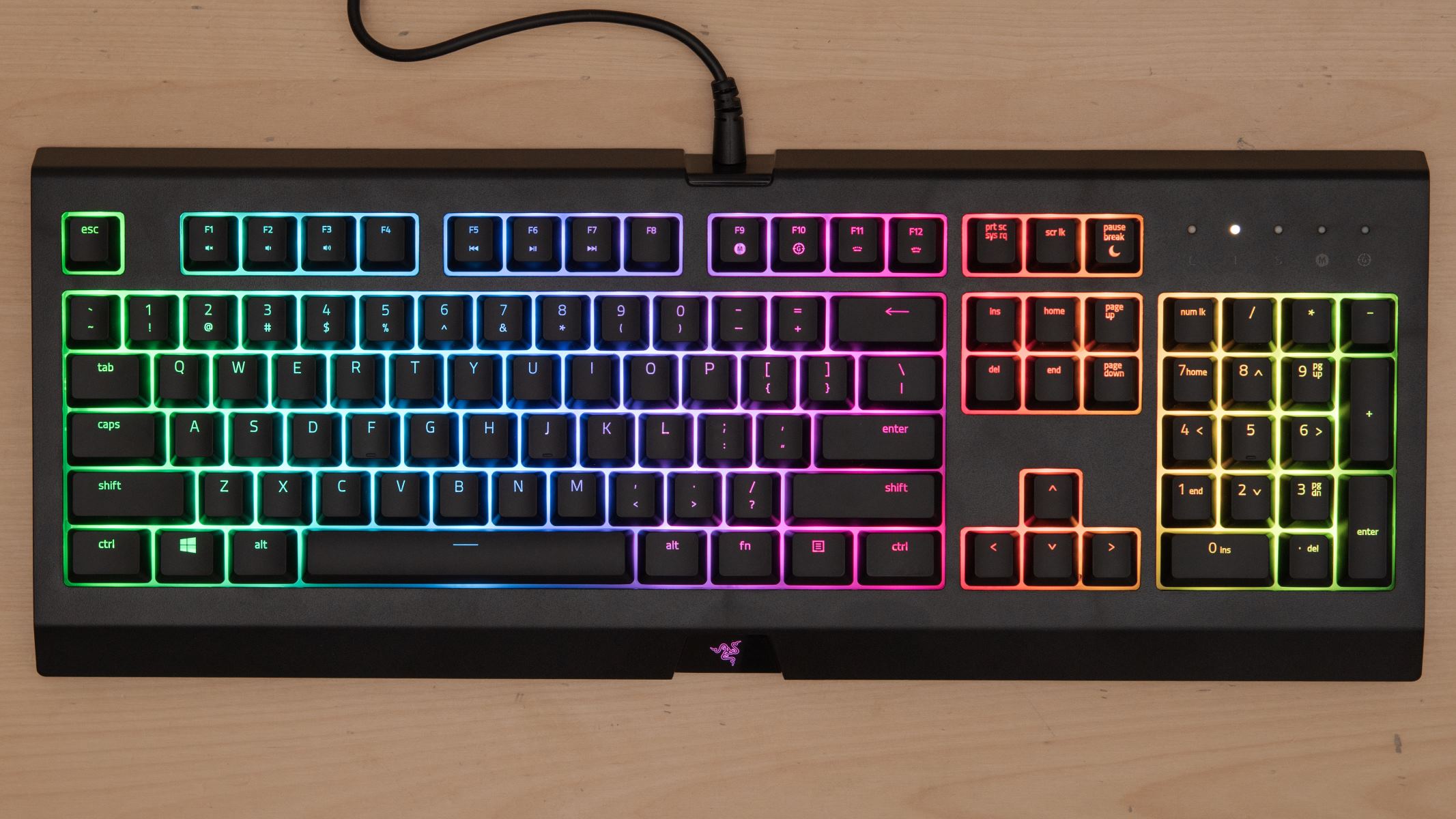The black screen of death is one of the potential problems that you may experience after spending a long period of time on your computer or laptop. The black screen of death tends to happen after a long period of efficiency, followed by a complete breakdown in in which everything that you failed to save before the breakdown can no longer be saved. While this occurrence is fairly rare, the probability of it happening to an individual computer user is never zero. In order to reduce the damage as much as possible, you will need to know what to do if the black screen of death ever happens. Let’s take a look at what the black screen of death is, its causes, and all the ways you can fix your computer or laptop.
For the MacBook Black screen of death, you can read our guide by clicking here.
What Is the Black Screen Of Death?
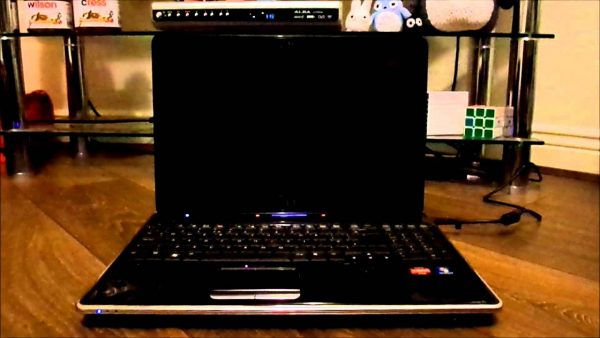

Black Screen of Death (BSOD) is one of the threats in the world of Windows, which is difficult to manage or resolve. This is because it doesn’t display an error message. The screen simply goes black; the PC locks up with just a flashing underline cursor that can be found at the upper left-hand corner.
This black error screen is displayed by some operating systems after experiencing a system error. Moreover, it might cause a problem since the screen can’t be seen at all.
What Causes the Black Screen Of Death?
A lot of factors can trigger the black screen of death on Windows laptops and desktops. These are some of these causes.
Incomplete Windows 10 Installation
We can’t avoid encountering errors while we are trying to install Windows 10. Errors can happen whether we are updating from a previous version to the latest version or unto a formatted hard drive. The errors can be due to the setup problem. This could happen if your computer is old. The setup can be still in progress but is running too slow. Moreover, the setup can also be stuck because there’s no HDD activity. Also, the device driver might fail, so an error occurred.
If you’re looking for a guide on how to format a hard drive, we have one that can help you out. We also have how to free up disk space and how to free up space on Mac articles that you may want to read as well.
Unfinished Windows Update
During the Windows update, the system reboots or restarts. With that, you will be given a login screen. However, after you type in your password, Windows 10 will start to hang, and you will see only a black screen after you login.
While in this state, your mouse will still be responsive. However, only a few desktop icons will be visible, and there will be no taskbar. Your Windows 10 computer will now be stuck in the barren state called “The Black Screen of Death.”
Windows Security Update
One of the main causes of the black screen of death is a certain Windows security update. Several users hesitated on the problem after some security updates. These security updates are Update KB2607712, Update KB976098, and Update KB915597 to name a few. Though Microsoft denied this allegation, most Windows users insisted that after they uninstalled the said updates, their Windows system goes back to normal.
Forceful Shutdown
This process might turn to have damaged or corrupted system files. With that, it can lead to the black screen of death every time you try to upgrade the Windows 10 system.
Software and Driver Errors
A simple software glitch may lead to the black screen of death. This usually happens when you are dealing with a program that’s on full screen. Some of these programs include games, streaming sites, or your browser. Moreover, incompatible, outdated, or corrupted drivers can make the Windows computers freeze and crash, which can also lead to the black screen of death.
Error on Display or Faulty Cable Connections
Another possible cause of encountering the black screen of death is when there is a problem with the display. This sometimes happens when you upgrade your monitor, and the connection can’t handle the resolution. On the other hand, if your monitor is working, the problem might be in your video card. The cooling fan may be broken, or the electronics are burnt.
Your monitor might have a problem especially when it struggles to function when tethered to integrated graphics. However, if you tried to connect your monitor to another computer and it does work, the problem relies on the hardware fault. The problem with the hardware affects the ability of the video card to work. There might also be a faulty or disconnected cable. Moreover, the causes may be the motherboard, the power supply, or the hard drive.
Overheating
As the components inside our computer operate, they generate heat. This heat should be removed for the system to run smoothly. This is because the high internal temperature can cause the computer’s components to lock up, melt, and become damaged. With that, the computer must be properly ventilated. There are small plastic fans installed in all computers to help vent the heat. They need to be checked and cleaned to avoid overheating. However, the overheating system used to show warning signs in case of overheating. These include frequent lock-ups, unexpected shutdowns, and video loss.
Issues on Power Supply
We all know that power supply is an important component in running our PC. Sudden power cut and fluctuating power supply can affect our computer and can lead the system to go dark, thus it can cause the black screen of death.
Graphics Card Driver Issue
Since the problem relies on the system’s display, it is logical to consider a problem with the computer’s graphics card. They might be corrupted, or they might need to be updated. On the other hand, graphics drivers should be considered, too. The problems may be poor graphics in games, poor video resolution, and poor color. The startup speed may be slow, too.
How to Fix the Black Screen of Death on PC
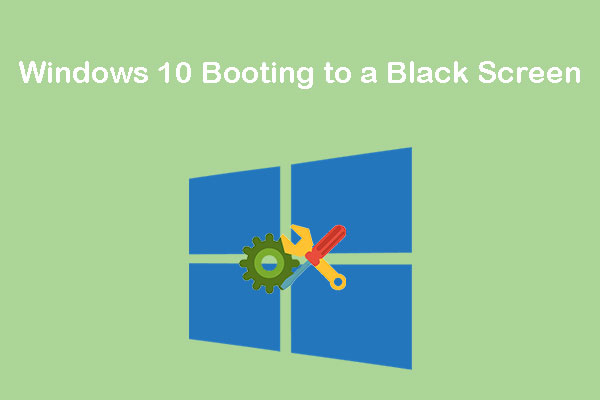

Boot Your PC Into Safe Mode
- Turn off your PC by pressing and holding the power button to perform a forced shutdown.
- Repeat step one three times, this will launch the “Preparing Automatic Repair” function.
- Once there, access the “Advanced Troubleshoot” options.
- Then, select “Startup Settings.”
- Click on “Restart,” and then select “Enable Safe Mode.” Press the number 4 or F4 key button to do this.
Troubleshoot Black Screen of Death Without Cursor


To fix this issue, first, you need to boot your computer into “Safe Mode with Networking.”
- The first step is to restart your computer.
- When you see the sign-in screen, hold the “Shift” key while you select “Power” then choose “Restart.”
- After your PC restarts, select “Troubleshoot” from the options screen.
- Select “Advanced Options” once you’re there.
- After that, proceed by clicking on the “Startup Settings” option.
- Then, click on “Restart.”
- A selection of options will then appear. Proceed by selecting the “Safe Mode with Networking” option, which is done by pressing 5 or F5 key.
After doing the steps, you need to perform the System File Checker (SFC) command to resolve the issue. To run the SFC scan, follow these steps:
- Click on “Start.”
- On the dialogue box, type “CMD.”
- Select “Command Prompt.”
- Right-click and then select “Run as Administrator.”
- Key in “sfc/scannow” then press “Enter.”
- After that, restart your computer.
Reset Your PC
You need to reset your PC if the “Automatic Repair” did not fix the black screen of death without cursor issue.
- Click on the “Start” button.
- Go to “Settings” and proceed by clicking on “Update and Security.”
- On the left pane, click on “Recovery.”
- Under the “Reset this PC,” click on “Get started.”
- Select the “Keep my files” option to retain your personal files.
Restore Corrupted Files
- To scan the corrupted files from your system, use the System File Checker (SFC) utility.
- Then, continue by opening a command prompt while in administrator mode.
- Enter the command “sfc/scannow.”
- If the entered command successfully runs, run the command DISM.exe /Online /Cleanup-image /Restorehealth. Remember to have space before the “/” symbol.
- Wait for several minutes for the scan to be completed and for the issue to be fixed.
Restart the Incomplete Windows Installation or Update
If the hard drive LED is blinking, it means that the setup process is ongoing. You don’t have to worry and just need to wait for the setup to complete. On the other hand, if the LED is not blinking, there might be a problem with the setup, and you can’t go any further. With that, you have to do the following steps:
- Power off your computer. Do it by pressing and holding the power button for five to ten minutes.
- Remove all the connections. These include the power cord, external hard drives, game controllers, phone chargers, internet connections, and all external devices.
- Connect your system to a power supply, but leave your internet disconnected.
- Boot up your computer.
- Windows will then automatically restart the setup process.
Troubleshoot the Black Screen Of Death With No Display
- Open the “Task Manager.” You can do it by pressing the keyboard shortcut, “Ctrl+Alt+Del” keys simultaneously.
- Click on “File.”
- Click on “Run New Task.”
- After that, type “explorer.exe.”
- Hit “Enter.”
If the method did not fix the problem, you need to remove all external devices and reboot.
- Boot your computer and access the safe mode function.
- Press the “Windows + C” keys simultaneously.
- After that, select “Settings.”
- Click on “Change PC settings.”
- Choose “Update and Recovery.”
- Click on the “Windows Update” option.
- Select “View details,” and then, “Check for Updates.”
- Under “Optional,” select “Install Updates.”
Troubleshoot Black Screen of Death Not Able to Sign In
Another effect of acquiring the black screen of death is you not being able to sign in, for which you will need a Windows 10 installation media. You need to download the installation media on a USB or burn it on a DVD. You should then tether the media to your problematic computer. Turn off your computer and reboot it using the installation media.
- First, choose the “Repair this Computer” option.
- Next, a “Select an Option” will appear on your screen.
- Select the “Troubleshoot Computer” option.
- Click on “Advanced Options” then “Startup Settings.”
- After that, click on “Restart.”
- You will be given some options when your computer reboots.
- With that, press F5. On the other hand, you can scroll to the “Safe Mode with Networking.”
- Press your Enter key to go into Safe Mode.
- Then you’ll have the option to select the following choices.
- Check the Default display
- Uninstall the Device Driver for Display
- Auto-Install or Isolate Device Causing Problem
Fix the Black Screen of Death After Update


- Click on Open “Project.” You can do that by simultaneously pressing the “Windows + P” keys.
- The “Project Menu” will open. However, you won’t be able to see it, but it’s normal.
- Then keep on pressing your up or down keys.
- Then, you can press the Enter key.
- If the process is successful, your screen will appear. However, if it’s not, repeat the process several times.
Fix the Black Screen of Death After Sleep
- To fix this, you need to disable “Fast startup.” These are the steps to follow:
- Go to the “Control Panel.”
- Next, press “Power Options.”
- Select “Choose what the power button does.”
- Under the “Shutdown Settings,” you will see a checkbox that says, “Turn on fast startup.”
- Uncheck the checkbox.
After disabling the “Fast startup” feature, restart your computer and see if the issue is fixed or not.
Reinstall Your Video Card
- Press your Windows key.
- Then, proceed to the Device Manager option.
- Scroll down and look for “Display Adapters” then click on the arrow next to it.
- Choose the appropriate display adapter and right-click on it.
- Then, select the Uninstall device option.
- Once it’s uninstalled, right-click on your display adapter again.
- Lastly, select the “Scan for hardware changes” option. This will allow your adapter to reappear, which you can reinstall.
Update Your Driver
- Hit the “Windows” key.
- Select “Device Manager.”
- Scroll down and look for “Display Adapters” then click on the arrow next to it.
- Select the appropriate display adapter then right-click on it.
- Lastly, select the Update Driver option.
How to Fix the Black Screen of Death on Laptop

Photo by Britec09 on YouTubeHere are the common fixes if the black screen of death appears on your laptop after log-in with password.
Restart Your Laptop
- Shut down your laptop.
- Remove all power supplies from your laptop.
- Wait for one to two minutes.
- Reconnect the power cable and then re-insert the battery pack.
- Connect your laptop to a power supply.
- Use your credentials to sign in and see if the problem has been alleviated.
Restart the Explorer.exe Process
- Open the “Task Manager.” You can do that by pressing the keyboard shortcut, “Ctrl+Alt+Del.”
- Once you are on the Detail Tab, continue to scroll down.
- Then, look for the explorer.exe. function.
- Click on it, then click “End Task.”
- Restart your laptop.
If you can’t find the explorer.exe, here is how you do it.
- Go to Task Manager and click on File.
- Then once you’re in, select the Run new task option.
- Key in “explorer.exe.:
- Hit “Enter.” if the process runs, restart your laptop to see if the issue is fixed.
Update the Graphics Driver
- Press the keyboard shortcut, “Windows + X” keys at the same time.
- Select the Device Manager option.
- Then, go to Display Adapters.
- Right-click your laptop’s Graphics driver.
- Proceed by selecting Properties.
- After that, select “Update Driver”.
- Then, you’ll have to click on the “Search automatically for updated driver software” option.
- All you have to do is to finish the process.
- Restart your laptop and check if the issue is fixed.
Tips on How to Prevent Black Screen of Death
For Overheating
Overheating is caused by improper ventilation, cooling systems malfunction, and dust or cobweb build-up. Since the overheating of the computer’s components can result in the black screen of death, you need to find a solution. With that, these are the things that you need to do:
- Keep your vents open and clear.
- Check if all the fans are working, and replace the ones that are not working immediately.
- Clean out the inside of the vents periodically so the air can flow freely.
- For your laptop, use a small block under it, or you can use cooling mats.
- Use a vacuum to suck up dust and cobwebs.
- Always make sure that your system is not directly exposed to heat or high temperatures.
- Try to avoid using processes that can give extreme workload to the CPU and GPU.
For Issues in Power Supply and Faulty Cable Connections
- Sudden power cuts and the fluctuation of the power supply can harm the system components. Moreover, loose cable or hardware connections can also lead to the black screen of death.
- Always make sure that you have enough and a continuous power supply whenever you use your system.
- Always check your cable connections.
- When you have worn-out or damaged cable, you need to change them immediately.
- Check your video connection and make sure that it can handle the video resolution.
- Check your video cards for signs of defects.
For Software Driver Issues
- Update your software driver if there is an available update.
- Download driver software from the website of your system’s manufacturer or your trusted source.
- Open Windows in safe mode.
- Uninstall incompatible and corrupted drivers.
- Update outdated drivers.
Be Prepared for the Black Screen of Death
We can’t avoid encountering different issues with our devices, especially if we are always using them. With our computers or laptop, there is the black death of the screen, which seems very troublesome when it happens. However, there are many ways how we can prevent and fix this issue. We just need to be vigilant when we are using our computers or laptop. Also, we need to know first the causes of the issue that we encounter. With that, we will be able to know how to fix the issue, and we will be prepared for whatever the causes are. So, we don’t need to panic when this happens.
If you’re experiencing the black screen of death on your MacBook or iMac, here are some ways on how to fix MacBook Pro/Air/iMac won’t turn on for black screen issue.









